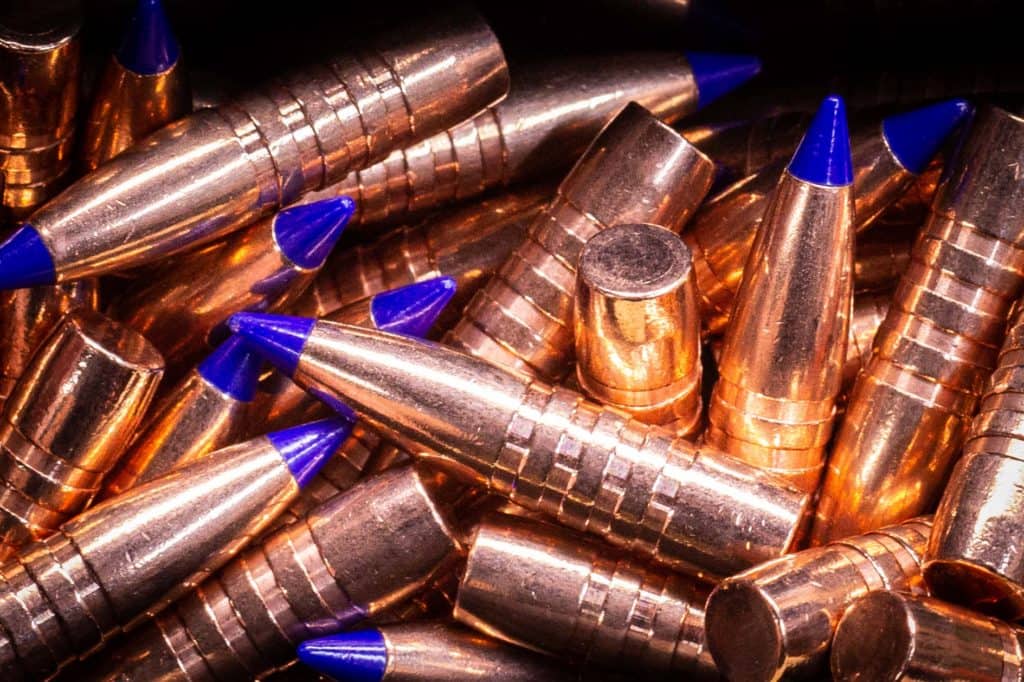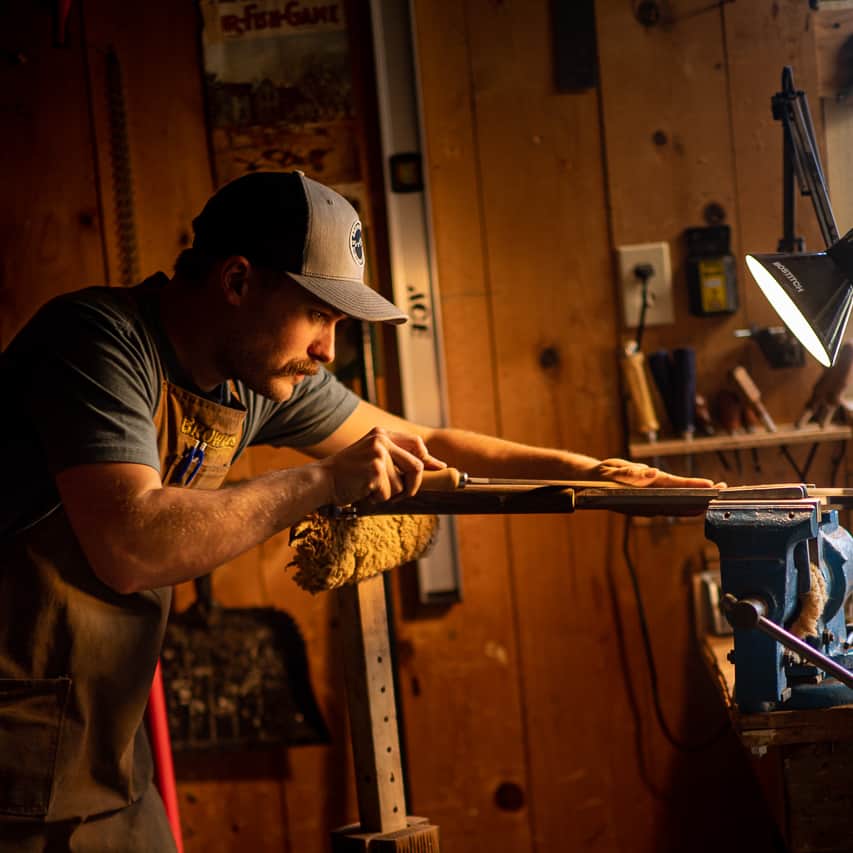
The question of which caliber is the best is one that is argued and beaten to death. Keyboard warriors will stand proud and defend the extra 50 fps they are getting out of this or that wildcat and claim its superiority in the world. While yes, velocity and all of that matter to a degree, but bullet choice is rarely discussed.
Your bullet choice is more important than caliber. The ballistic coefficient(B.C.), sectional density(S.D.), and construction are all significant factors to consider. Reloaders have a solid knowledge base on this topic compared to non-reloaders, but it is just as important when picking a box of ammo off the shelf at your local sporting goods store.
It is well worth the extra effort to research the bullet used in the factory ammo that you are picking up off the shelves.
Affiliate Disclosure: This article may contain affiliate links. When you use these links, I earn a small commission from each sale generated at no cost to you. This commission helps me continue to put out free content. I work a full-time job that I am very happy with; therefore, I don’t need this commission and am not obligated to speak highly of any product. Everything written is my own opinion: the good, the bad, and the ugly.
The Question You Need to Ask Yourself Regarding Bullet Choice
What will you be using this bullet for? This is easily the most important question you can ask yourself when shopping around for bullets. Are you hunting whitetails in the clear-cuts out east? Or do you plan on using it for elk in the mountains of Colorado? Is there a bullet that will do both?
The important factors that need to be considered are; game animal or intended target, accuracy, range, and expected terminal performance.
Furthermore, I don’t think there is a bullet choice that will do everything the “best.” You may have to accept it performing “ok” in one aspect to have it perform excellently in another. Finding that perfect balance is what keeps reloaders coming back for more.
Read More about Ballistics here!
Bullet Choice and Performance
There are an insane amount of bullet choices out there right now; hunting, self-defense, High Ballistic-Coefficient long-range bullets, and some that are good at more than one. So how do you navigate these muddy waters and not fall for this year’s sales pitch? You need to have a deeper understanding of what makes the bullet do what it’s advertised to do. I will further break this down into pre-impact and post-impact to simplify things.
Pre-Impact Bullet Performance
Pre-impact performance is your bullet’s ballistics, how the bullet flies and performs in flight. Ballistic Coefficient or B.C. is most often referred to here. In simple terms, B.C. is the bullet’s efficiency in flight. The higher the B.C., the less your bullet will drop at range and the better it will do in the wind. This is where ELD or Extremely Low Drag-style bullets come into play.
I will piss some people off here. If the majority of your shooting and hunting is done under 100 yards, you really shouldn’t worry about having the highest B.C. In this scenario, you want a bullet that is accurate as possible. Plain and simple.
The ballistic coefficient may be the most important factor in bullet choice if you’re shooting at long ranges. Competition and target shooters are mostly concerned with pre-impact bullet performance and could care less about what that bullet is doing once it enters a rib cage.

Post-Impact Bullet Performance
Post-impact bullet performance is just as it sounds; it’s how it performs once it impacts the target. Again, this is regarding flesh and bone as opposed to steel or paper. How much expansion can you expect, if any at all? Do you want the bullet to fragment? What about penetration? Hunting or Self-Defense, the conversation is the same.
How do you want your bullet to perform post-impact? First and foremost, you need enough penetration to reach the vitals of the intended target. Do you want the bullet to expand and pass through? Do you want the bullet to stay together and retain all or most of its weight?
Use coupon code KTG10 to get 10% off your order of $150 or more at Brownells.
A good rule of thumb when discussing post-impact penetration is that the higher the sectional density(S.D.), the more penetration. Sectional density is calculated by dividing the weight of the bullet by 7,000 times the bullet’s diameter in inches. This number is expressed out to the thousandth decimal or 0.000.
Pre-impact bullet performance can be tested and verified; post-impact is more theory than anything else. Yes, there have been tons of tests of post-impact bullet performance, but it is largely situational. Your bullet will act differently when it hits a front shoulder compared to weaving it between the ribs and hitting vitals. Experience is the only answer here. A post-kill ballistic analysis will teach you a lot.

Bullet Shape and Construction
The bullet’s shape and construction give you the performance you need. There are many bullet choices on the market today, so many that you can do just about anything with them. Long-range, short-range, self-defense, it’s all out there. As far as performance is concerned, what makes one different from another?
The shape of the bullet plays a major role in how ballistically efficient it is. In the firearms world, we call this “ballistic coefficient.” It is expressed as a number drawn out to the thousandths or 0.000. The higher the number, the more efficient it is in flight. It drops less at a distance and is less affected by the wind. This is a product of both shape and weight. The more aerodynamic, the higher the ballistic coefficient.
Lastly, construction is the most important aspect of post-impact performance. Thin jackets will expand more rapidly than thick jackets. Bonded bullets will stay together better than unbonded. Solids rarely break apart. Bullet manufacturers have a ton of information available about their bullet’s construction to help you make the right decision. To simplify it, many manufacturers will break it down to the recommended size of the game species. When it says “medium-large game,” that bullet was likely designed for more penetration than one advertised for just “medium game.”
Legal Restrictions May Dictate Bullet Choice
Historically, bullets have used a lead alloy as part of the construction of a bullet. This is due to how dense lead is. Some states and hunting areas outlaw the use of lead ammunition for reasons I won’t go into here. The good news is that many of the alternatives on the market are excellent! The alternative to lead comes in the form of solid coppers. Since they are solids, they tend to retain their weight well post-impact. I live in a state where I can use any bullet construction I want. But I chose to use Barnes TTSX copper bullets in my 270 because they have performed well for me.

Their Marketing Works! Bullet Choice Made Easy.
If you aren’t into reloading, follow the marketing. Yes, it’s more than just a sales pitch. They’ve done the work for you. Let’s look at Hornady as an example. I have no business relationship with them and don’t get paid to say any of this. I think they do a good job of bringing quality and accurate factory ammunition to the market.
Superformance Varmint
Their Superformance Varmint is intended for varmint hunting. It is loaded up with their legendary V-max bullet and their Copper equivalent, the NTX bullet. These bullets are designed for rapid fragmentation upon impact and to dump all of their energy as soon as they hit. Therefore, pass-throughs are rare with bullets like this. This is ideal for varmints and would be an extremely poor choice for deer as the bullet fragments might not make it to the vitals. Using a bullet not designed for varmints on varmints will make a clean kill, but you may have more fur damage.
Precision Hunter
In addition, Hornady’s Precision Hunter line of ammunition is designed for hunting at the longer ranges found in the western United States. It is loaded with the ELD-X bullet, meaning “Extremely Low Drag.” This bullet has a tip that resists deformation during flight caused by aerodynamic heating or friction with the air. The ELD-X bullet is designed to perform at longer ranges when the velocity drops. They advertise that its ideal expansion range is between 1800-2800 fps.
American Whitetail
The American Whitetail is Hornady’s version of the ideal whitetail cartridge. Loaded with Hornady’s classic interlock bullet, it has an exposed lead tip that allows for fast, controlled expansion. The lead-alloy core and jacket are held together via their InterLock® design. This keeps the jacket and lead together post-impact. I personally have used this ammo in my 30-06 to take four whitetails and have had really good results. Out of my Remington 700, the groups rival my hand loads. I wouldn’t look anywhere else for the price when choosing a whitetail load.
Leverevolution
Hornady set the classic gun community on fire when it released its Leverevolution line of ammo. Using modern powders, Hornady brought higher velocities to classic lever gun cartridges while keeping pressures down. The best part is these bullets are pointed! But it can still go in your mag tube without causing a chain detonation due to its patented flex-tip.
Bullet Choice, Not Caliber
I can not emphasize enough how important bullet choice is. Quit worrying if this or that caliber is big enough for “insert your game animal here.” Instead, do the research and find the right bullet for the job. A little research can go a long way in deciding which bullet is best for each scenario.

Written by: Kurt Martonik
Kurt is a Gunsmith, Reloader, Hunter, and Outdoorsman. He grew up in Elk County, Pennsylvania, where he became obsessed with the world of firearms. Following high school, Kurt enlisted in the United States Air Force as a Boom Operator, where he eventually rose to the position of Instructor. After his military service, he attended the Colorado School of Trades(CST) in Lakewood, CO for gunsmithing. Following graduation, he accepted a job at C. Sharps Arms in Montana, where he worked as a full time stockmaker and gunsmith.